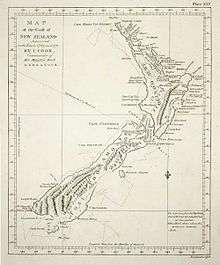New Zealand History/European Explorers
< New Zealand History‹ Back to Maori Culture and Lifestyle up to 1840
First European Explorers to Discover New Zealand

Abel Tasman
Abel Tasman, a Dutch explorer, was one of the first Europeans to discover New Zealand on the 13th of December 1642, in his search for the Great Southern Continent. Tasman noted in his journal that it was a large land, uplifted high (the area he sighted was near the Southern Alps). He called New Zealand 'Staten Landt' which refers to the 'Land of the (Dutch) States-General'.
The first encounter Tasman had with the Maori was on the 18th of December in Taitapu Bay (now Golden Bay), when two canoes from the shore approached Tasman's ship. Communication was not possible, as the Dutch and the Maori couldn't understand each other's languages.
Later, more canoes approached the ship, so the Dutch sent out a boat to tempt the Maori to come on board. One of the canoes rammed the small Dutch boat, killing some sailors. The Dutch, in turn, fired at the Maori when more canoes approached, causing the Maori to retreat to shore rapidly.
After this, Tasman travelled to the tip of the North Island before leaving New Zealand waters.
James Cook
British explorer, James Cook, captain of the Endeavour entered New Zealand waters on the 6th of October 1769, and laid anchor at today's Poverty Bay. When Cook saw smoke, he realised the land was inhabited, he and a group of sailors headed to shore, in the hope of befriending the natives and taking on board refreshments. The Maori were hostile, however, and the British had to fire on the Maori in self-defence.
Cook attempted trade with Maori again at a different location, but with no success. He managed to sketch 2400 miles of coastline on the journey and proved New Zealand was not part of a major continent. He returned to New Zealand another two times in the 18th Century.
Forward to A New Economy Introduced to New Zealand ›